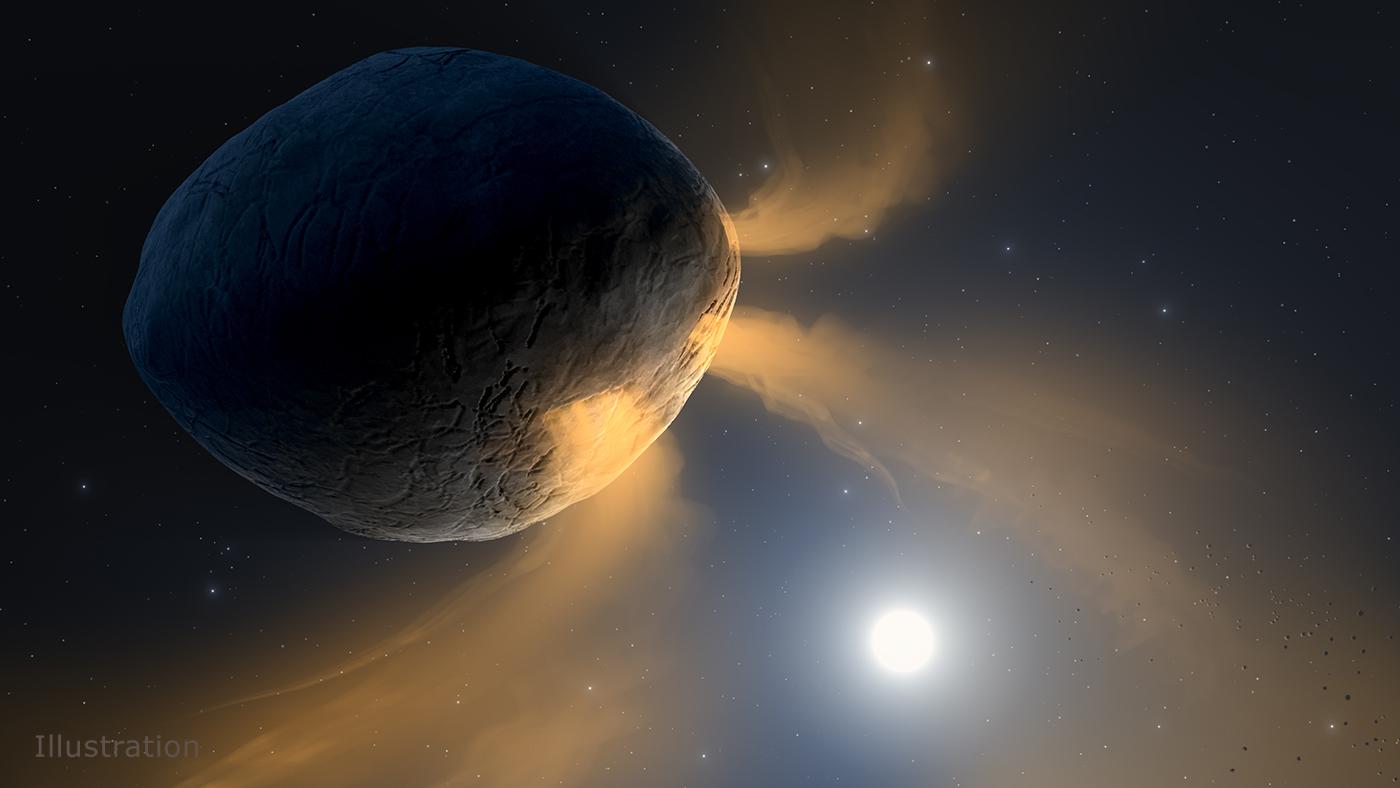Scientists have been able to simulate the chemical composition of the asteroid Phaethon based on the conditions in which it is located. This unusual celestial body flies very close to the sun, and during this moment it forms a tail.

Asteroid Phaethon
Scientists from the University of Helsinki can explain why the asteroid Phaethon has a tail when it flies close to the Sun. They were helped by modeling the chemical composition of this object, which was formed under the influence of high temperatures.
The tail of Phaethon is very interesting to scientists because it is only remotely similar to that of comets. The mechanism of formation is the same, but in the latter, it consists of water, gases and dust. If the asteroid consisted of them, then it would have a tail all the time.
Obviously, the answer should be hidden somewhere in the chemical composition of this celestial body. Recently, the Spitzer infrared telescope was able to determine it quite roughly. Thanks to him, scientists found out that the composition of Phaethon is similar to that of meteorites, which are called CY carbonaceous chondrite.
Chemical transformations of the asteroid
In general, carbonaceous chondrites are a fairly common type of meteorites. And there are also a lot of asteroids that look like them, for example, Ryugu and Bennu. However, they are similar to the subtypes CI and CM. They are very rare, only 6 of them are known. The main difference in their chemical composition is the presence of a significant amount of iron sulfides.
According to scientists’ research, Phaethon mainly consists of olivine, carbonates, iron sulfides and oxides. All these minerals are present in meteorites of type CY. However, scientists also found portlandite and brucite in Phaethon. Their presence helped explain thermal modeling.
When approaching the Sun, the Phaethon heats up to 800 °C. At such temperatures, carbonates form carbon dioxide, phyllosilicates release water vapor and sulfides release sulfur gas. All these substances form the asteroid’s tail.
According to phys.org
Follow us on Twitter to get the most interesting space news in time
https://twitter.com/ust_magazine


